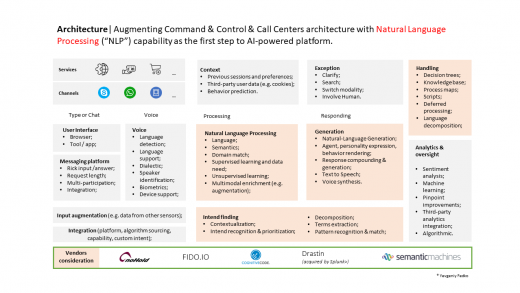
Digital is a top priority for CxOs of all calibers across nearly every industry. I can’t think of any executive I came across during the past 5-6 years that didn’t speak or made no effort to unleash digital potential of the organization. What they have in common is an understanding that digital is a means to increase the value of the organization.
In fact, according to the EY survey amongst 2,900 executives, almost all (99%) say that they have invested in digital transformation. It appears to pay off as well, digitally mature organizations report significant increase in sales/revenue and profits.
However, for many it is still difficult to understand how well they are doing in digital space, how effectively measure success and where they are comparing to others. These are not easy questions, and it is often difficult to judge what good enough should look like.
It is also common to see organizations taking a technology-centric approach to digital, making it yet another technology project, drifting away from business-driven digital value creation.
I propose to take a holistic view of the Digital aspects. And have grouped them into purpose-driven focused areas of effort below:
- Create experience. It starts with customer service. Your ability to effectively and consistently service clients, message and communicate internally and externally is detrimental. You want to merge digital and physical experiences. Typically, customer-driven. It is important that experience is consistent among all channels (physical and virtual). Your customer service and service culture should translate to mobile/web user interface design (be usable and friendly), provide a responsive interface and have provision to instant feedback loops. Technology enablers such as IoT and VR/AR are there to help as well. Think of engaging customers at the right time and location, providing virtual guidance and experiences. Or even improving internal operations, such as facilities management or location tracking.
- Amplify the brand. Your brand is your reputation. The trustworthy brand is the perception you want to create. Brand communication, contents and campaigns that provide right degree of personalization, socially integrated, engaging and best address customer unique needs are the most successful. Develop a single view of customer. Customer binding brand story should inspire loyalty. Leverage CRM technology to have 360 view of the customer, partner with digital marketing agencies, implement loyalty management programs and actively manage relations. This is what can make you different.
- Become insight-driven. Essentially you need to get data right. No data should go trash bin. There are all sorts of open and private data that can help organization to perform opportunity analysis (i.e new customer, social lead management), assist with customer needs assessment (i.e social monitoring, needs visualization), analyze your audience and measure quality of the engagement and contents (i.e language, concepts, sentiments). Enrich data with top of the notch customer research, ethnographic research. Finally, capture the voice of customer and use it for decision making. Big Data, Analytics and AI-driven implementations (i.e sentiment analysis,) are there to empower you.
- Make an impact. Look closer to the analytics application domains. Integrate your systems to empower employees with insights, analyze large data sets, include mobile and web data for better interaction analysis (i.e. click throughput, average session time, page views, new vs existing customers statistics). Define the right level of metrics, make sure reporting provides key insights that drive the organization’s performance. For instance, understand your marking ROI across all channels. Leverage predictive modeling and large data sets for forecasting. Make data provide you with forecasts. It is bad to assume in the digital era. Machine Learning has proven to provide a higher fidelity rate judgment nearly in every industry when compared with humans. There is no bias in the algorithm should you train it right and provide quality data.
- Ignite innovation and change. Plan to extract and align creative thinking of the employees to strategic objectives. Ideate, create, experiment and reward employees for every attempt they make. More importantly, validate your ideas with customers. You may introduce mechanics to solicit ideas, run problem/opportunity statement driven ideation process. Put user/customer-driven design process to structure solutions. Know your people, and where they are good at. It is a matter of personality traits. Some would brute force you with ideas, others prefer to carefully architect solution looking at every aspect and detail, whereas others may love to get things done on time and budget. Finally, allow employees to have own time to experiment, have a simple process to avail funds to play with ideas and to come up with MVP.
- Enable employees. Building on the above thoughts you may want to find ways of encouraging employees to give more. Provide employees with flexibility and choice of the technology. Let them bring own devices, encourage discussion on internal social platforms. Help employees to create and manage knowledge across organizations. Look to partner with online learning provides to inspire development. Encourage healthy lifestyle. Use gamification to encourage right behaviors and habits. At least, remove excess sugars from the snacks you offer. It sounds not very digital, but the latest neuroscience research proof that excess amounts of sugar impact mental clarity.
- Get the digital platform right. Cloud is proved to put digital implementation on steroids. Cloud vendors do innovate their platform like no enterprise can. But, what to do with it? It is like a Lego without proper design and assembly it makes no sense. You want to extract maximum from the platform and should ensure that services you put on a loosely coupled, provide required level of interoperability, make components replaceable, reusable and scalable to accommodate demand. Minimize amount of customization you make to the core product and do prefer Cloud-native solutions that minimize your operations burden. You do not want to lock yourself with one vendor or solely rely on one vendor-proprietary technology and standards. Pick solutions that offer marketplace, where you can plug and play community developed bolt-ons and functionality. Where applicable, engage with open source vendors, they offer solutions at the fraction of the cost and matured to provide support services on par with tech giants.
- Get your cybersecurity up to the mark. Cyber risk should be one of your top agendas. Any incident may impact your brand reputation and customers’ perception of your services and products. Unlikely you will be great in everything, but bare minimum you should be clear on your organization’s cybersecurity threat profile. More Digital you become higher is the risk of being compromised. Work with cybersecurity managed service provides to become vigilant and minimize risk and exposure. Some of the services to look are application and data protection, cyber risk monitoring, incident response & management, identify/access management, threat intelligence and continuous risk analysis. You should aim to become vigilant and resilient and your architecture and processes should support the intent.
Certainly, no good planning goes without clear vision, strategy and objectives. Digital strategy should drive aspects of brand image and positioning, growth options, partnerships, products and services, profitability/pricing, customer experience, and platform.
In one of my previous posts here I also offered perspective on how some of the digital gaps can be addressed by organizations and discuss idea of turning to be a more social enterprise.


